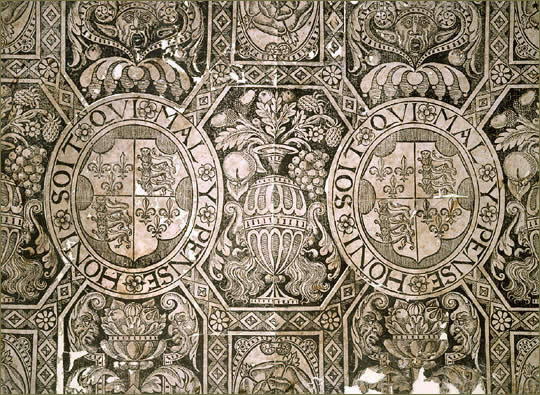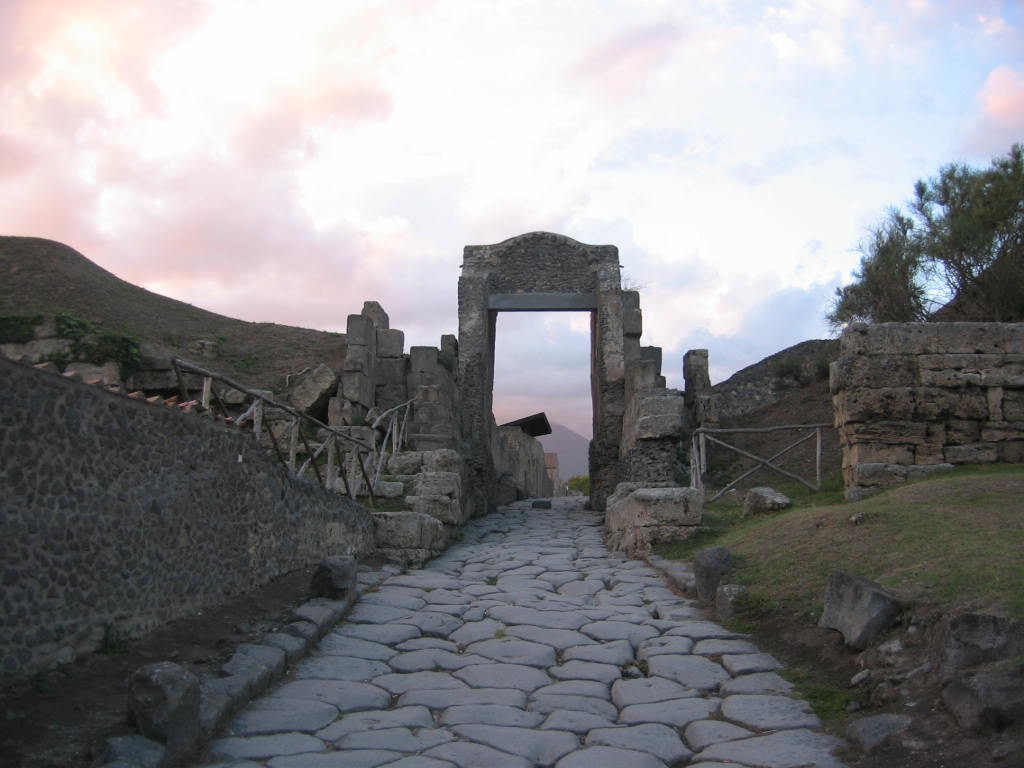Wallpaper Download Definition
source(google.com.pk)
Wallpaper was initially used as an affordable substitute for lavish coverings, such as frescoes, tapestries, leathers, or hangings. Its current form debuted in sixteenth-century England, and its popularity took off at the end of the eighteenth century following advances in reproduction techniques. Wallpaper transformed the world of interiors, offering depth and perspective, creating the illusion of panoramic vistas, and incorporating narrative sequences, collections of engravings, or brief morality or history lessons. It eventually developed into the wide range of styles that have marked four centuries of decorative art, from Raphael to conceptual art, and from frescoes to photography. This stunning contribution to wallpaper’s current revival offers a comprehensive review of a savoir faire that continues to thrive.
The Chinese glued rice papers onto their walls as early as 200 BC - but this was not wallpaper as we know it today. Paper as a wall covering was first used by the working classes in Britain and in Europe as a substitute for costly materials. Frenchmen, Christophe-Philippe Oberkampf invented the first machine for printing wallpaper in 1785. Frenchmen, Louis Robert invented a way to make an endless roll of wallpaper around the same time. The earliest wallpapers in England and France were hand painted or stenciled.
Philadelphia had become the center of wallpaper production in the United States by the end of the eighteenth century, although French influence continued to dominate the design of domestic papers. Subjects ranged from commemorative and panoramic scenes to designs drawn from architecture and nature, like the garland adorning these two tromp l'oeil columns in the photo to the right.
Suggested Reading
Around 4000 B.C., the earliest known form of "paper" was introduced: Egyptian papyrus.
Wallpaper actually began in ancient China, first because the Chinese invented paper, and secondly because they glued rice paper onto their walls as early as 200 B.C.
In 105 A.D., the Chinese court official Ts'ai Lun, invented papermaking from textile waste, i.e. from rags. This was the birth of paper as we know it today.
Some time in the 8th century, several Chinese prisoners with papermaking skills worked under Arabs, who in turn, spread the knowledge of papermaking throughout the Middle East.
By the 10th century, Arabians were substituting linen fibers for wood and bamboo, creating a finer sheet of paper. Paper now reached a much higher quality level.
During 12th century, papermaking had spread throughout Europe.
The earliest European pictorial block prints were religious souvenirs known today as "helgen". The oldest known, a representation of the Virgin, is dated 1418. It is now in the Royal Library at Brussels. This type of printing method may have also been used by the Chinese as early as the 5th century.
Jean Bourdichon painted 50 rolls of paper with angels on a blue background for Louis XI of France in 1481. King Louis ordered the portable wallpaper because he found it necessary to move frequently from castle to castle. Other well-heeled Europeans commissioned artists to paint paper for their walls, but real wallpaper can hardly be said to have existed till the advent of the printing press.
The earliest know fragment of European wallpaper that still exists today was found on the beams of the Lodge of Christ's College in Cambridge, England and dates from 1509. It is an Italian inspired woodcut pomegranate design printed on the back of a proclamation issued by Henry VIII. The paper is attributed to Hugo Goes, a printer in York.
A guild of paperhangers was first established in France in 1599.
Jean-Michel Papillon, a French engraver and considered the inventor of wallpaper, started making block designs in matching, continuous patterns in 1675, and wallpaper as we know it today was on its way.
The oldest existing example of flocked wallpaper comes from Worcester and was created in approximately 1680.
The manufacturing methods developed by the English are significant, and the products from 18th century London workshops became all the rage. At first, fashion conscious Londoners ordered expensive hand painted papers that imitated architectural details or materials like marble and stucco, but eventually wallpapers won favor on their own merits. Borders resembling a tasseled braid or a swag of fabric were often added, and flocked papers that looked like cut velvet were immensely popular.
Wallpaper came to America in 1739, when Plunket Fleeson began printing wallpaper in Philadelphia.
In early America, colonials copied European fashions. After the Revolutionary War, Americans set up workshops of their own. Paper was all the fashion, from neoclassical looks to rambling roses. American firms made their share of patriotic "commemorative" papers, which we have come to know from trunk linings and bandboxes.
In 1778, couis XVI issued a decree that required the length of a wallpaper roll be about 34 feet.
Frenchmen, Christophe-Philippe Oberkampf invented the first machine for printing wallpaper in 1785. Frenchmen, Nicholas Louis Robert invented a way to make an endless roll of wallpaper around the same time.
In 1798, lithography was invented by Alois Senefelder in Solnhofen, Germany.
By the 1800s, French scenic papers printed with hand-carved blocks, some taking as many as 5,000 blocks to produce, were popular.
In 1839, the English invented a four color surface printing machine with designs hand-cut on cylinders that could print 400 rolls a day. It was invented by the Charles Harold Potter of the calico printing firm Potters & Ross of Darwen in Lancashire, England.
By 1850, eight color printing was available and in 1874, the twenty color printing machine was invented.
In 1879, gravure printing, also known as Intaglio, was invented by Karl Keitsch in Austria.
In 1888, Ferdinand Sichel developed the first ready-to-use wallpaper paste.
In 1890, flexographic printing is invented in England.
Wallpaper pasting machines first appeared around the turn of the 20th century.
Silkscreen printing is said to have originated in Japan and China between 960-1280. Although, it was first patented in England by Samuel Simon in 1907. The first mechanical silkscreen machine was invented in 1920.
In the Victorian era, rooms paraded print upon print, mostly in garish colors, and the advent of machine-made wallpaper put the cabbage rose and arabesque patterns within the budget range of practically every home. Artisans such as Louis Comfort Tiffany and William Morris and their lyrical interpretations of nature, hand-printed by the wood block method, came to symbolize Art Nouveau. The Victorian Era, as one would expect, was a grand time for wallpaper featuring over embellished designs featuring somber colors, but it was in the roaring '20s that wallpaper really took the spotlight for the first time. Known as the Golden Age of Wallpaper, some 400 million rolls were sold during that period.
In 1936, cellulose derivative Carboxymethylcellulose (CMC) made its market debut as Henkel-Zellkleister Z 5, a paste powder that was soluble in cold water.
After World War II, the entire industry was revolutionized with the appearance of plastic resins which offered stain resistance, washability, durability and strength.
In 1974, the National Guild of Professional Paperhangers was established in the United States.
Modernism frowned on embellishments, so wallpaper fell into disfavor during much of this century. But as the 20th century ebbs and the bane of cookie-cutter homes and sterile work environments is upon us, some have rediscovered the romance and beauty of patterned walls.
Recent advances in digital, photo, and printing technologies have allowed modern printing facilities to replicate historic papers and other digital media on a variety of substrates.
Of course, one should no longer talk about wallpaper. Now it's wallcoverings, for technology has stepped in and created products that incorporate miracle compounds that make them washable, long lasting, pre-pasted, and yet so true to the best of history's worldly arts. So, companies can reproduce any style of any period. And unlike the costly fresco paintings, tapestries and hand-painted papers of the past, today's wallcoverings are very affordable.
Wallpaper Download Megan Fox Desktop of Bollywood Katrina Kaif Kareena Kapoor Alia Bhatt Actress Mobile HD 1080p Free Download

Wallpaper Download Megan Fox Desktop of Bollywood Katrina Kaif Kareena Kapoor Alia Bhatt Actress Mobile HD 1080p Free Download

Wallpaper Download Megan Fox Desktop of Bollywood Katrina Kaif Kareena Kapoor Alia Bhatt Actress Mobile HD 1080p Free Download
%20-%20Wallpapers4Desktop.com%20034.jpg)
Wallpaper Download Megan Fox Desktop of Bollywood Katrina Kaif Kareena Kapoor Alia Bhatt Actress Mobile HD 1080p Free Download

Wallpaper Download Megan Fox Desktop of Bollywood Katrina Kaif Kareena Kapoor Alia Bhatt Actress Mobile HD 1080p Free Download

Wallpaper Download Megan Fox Desktop of Bollywood Katrina Kaif Kareena Kapoor Alia Bhatt Actress Mobile HD 1080p Free Download

Wallpaper Download Megan Fox Desktop of Bollywood Katrina Kaif Kareena Kapoor Alia Bhatt Actress Mobile HD 1080p Free Download

Wallpaper Download Megan Fox Desktop of Bollywood Katrina Kaif Kareena Kapoor Alia Bhatt Actress Mobile HD 1080p Free Download

Wallpaper Download Megan Fox Desktop of Bollywood Katrina Kaif Kareena Kapoor Alia Bhatt Actress Mobile HD 1080p Free Download

Wallpaper Download Megan Fox Desktop of Bollywood Katrina Kaif Kareena Kapoor Alia Bhatt Actress Mobile HD 1080p Free Download

Wallpaper Download Megan Fox Desktop of Bollywood Katrina Kaif Kareena Kapoor Alia Bhatt Actress Mobile HD 1080p Free Download

Wallpaper Download Megan Fox Desktop of Bollywood Katrina Kaif Kareena Kapoor Alia Bhatt Actress Mobile HD 1080p Free Download

Wallpaper Download Megan Fox Desktop of Bollywood Katrina Kaif Kareena Kapoor Alia Bhatt Actress Mobile HD 1080p Free Download

Wallpaper Download Megan Fox Desktop of Bollywood Katrina Kaif Kareena Kapoor Alia Bhatt Actress Mobile HD 1080p Free Download

Wallpaper Download Megan Fox Desktop of Bollywood Katrina Kaif Kareena Kapoor Alia Bhatt Actress Mobile HD 1080p Free Download
